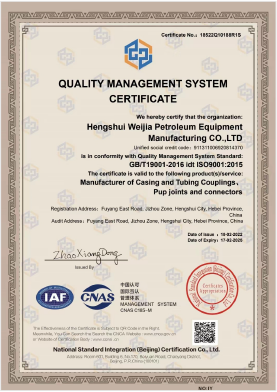- Afrikaans
- Albanian
- Amharic
- Arabic
- Armenian
- Azerbaijani
- Basque
- Belarusian
- Bengali
- Bosnian
- Bulgarian
- Catalan
- Cebuano
- Corsican
- Croatian
- Czech
- Danish
- Dutch
- English
- Esperanto
- Estonian
- Finnish
- French
- Frisian
- Galician
- Georgian
- German
- Greek
- Gujarati
- Haitian Creole
- hausa
- hawaiian
- Hebrew
- Hindi
- Miao
- Hungarian
- Icelandic
- igbo
- Indonesian
- irish
- Italian
- Japanese
- Javanese
- Kannada
- kazakh
- Khmer
- Rwandese
- Korean
- Kurdish
- Kyrgyz
- Lao
- Latin
- Latvian
- Lithuanian
- Luxembourgish
- Macedonian
- Malgashi
- Malay
- Malayalam
- Maltese
- Maori
- Marathi
- Mongolian
- Myanmar
- Nepali
- Norwegian
- Norwegian
- Occitan
- Pashto
- Persian
- Polish
- Portuguese
- Punjabi
- Romanian
- Russian
- Samoan
- Scottish Gaelic
- Serbian
- Sesotho
- Shona
- Sindhi
- Sinhala
- Slovak
- Slovenian
- Somali
- Spanish
- Sundanese
- Swahili
- Swedish
- Tagalog
- Tajik
- Tamil
- Tatar
- Telugu
- Thai
- Turkish
- Turkmen
- Ukrainian
- Urdu
- Uighur
- Uzbek
- Vietnamese
- Welsh
- Bantu
- Yiddish
- Yoruba
- Zulu
Compression Tubing Connector for Efficient Fluid Transfer and Improved System Performance
Understanding Compression Tubing Couplers A Key Component for Efficient Fluid Transfer
In various industries, the need for efficient fluid transfer systems cannot be overstated. Whether in manufacturing, plumbing, or HVAC applications, the reliability of these systems often hinges on a seemingly small but critical component the compression tubing coupler. This article explores the significance of compression tubing couplers, their types, applications, and installation methods, underscoring their essential role in maintaining fluid integrity.
What is a Compression Tubing Coupler?
A compression tubing coupler is a mechanical device used to connect two pieces of tubing securely. The primary function of this type of coupler is to facilitate the flow of fluids—be it gas or liquid—while ensuring that the connection remains leak-free. Compression couplers achieve this by using a compressive force, which tightly locks the tubing in place when the coupler is tightened.
Types of Compression Tubing Couplers
There are several types of compression tubing couplers available, each designed to accommodate different tubing materials and applications. The most common types include
1. Brass Compression Couplers Known for their excellent corrosion resistance and durability, brass couplers are often used in plumbing and HVAC systems. They provide exceptional sealing capabilities and are suitable for both water and gas applications.
2. Stainless Steel Compression Couplers These are ideal for applications requiring high strength and resistance to extreme temperatures and corrosive environments. Stainless steel couplers are widely used in food processing and chemical industries.
3. Plastic Compression Couplers Lightweight and resistant to certain chemicals, plastic couplers are excellent choices for less demanding applications, such as garden irrigation systems and small-scale pneumatic setups.
4. Metric and Imperial Couplers Compression couplers come in various sizes, catering to both metric and imperial tubing standards. This flexibility allows for seamless integration into existing systems regardless of the tubing standards used.
Applications of Compression Tubing Couplers
Compression tubing couplers are utilized in a wide range of applications, reflecting their versatility and reliability. Some common uses include
compression tubing coupler

- Industrial Fluid Transfer In manufacturing settings, couplers facilitate the transportation of various fluids, including lubricants, coolants, and chemicals. Their capacity to create secure, leak-free connections greatly enhances operational efficiency.
- Plumbing Systems In residential and commercial plumbing, compression couplers are vital in connecting pipes and fixtures. They are often used in cases where soldering or welding is impractical, providing a quick and effective solution.
- Automotive Applications In automotive engineering, compression tubing couplers are employed to connect fuel lines and hydraulic systems. Their reliability under changing temperatures and pressures is critical for vehicle safety and performance.
- Medical Devices Compression couplers are also found in medical equipment, ensuring sterile and secure connections in applications such as IV lines and oxygen therapy setups.
Installation and Maintenance
Installing a compression tubing coupler requires attention to detail to ensure a secure and leak-free connection. Here are some general steps to consider
1. Prepare the Tubing Ensure that the ends of the tubing are clean and free from burrs. Properly cut the tubing to the desired length using a tubing cutter.
2. Insert the Coupler Place the compression nut and ring onto the tubing before inserting it into the coupler body.
3. Tighten the Connection Holding the body of the coupler, tighten the compression nut using a wrench. A firm grip is essential, but over-tightening should be avoided to prevent damage.
4. Check for Leaks After installation, conduct a pressure test or check for leaks by applying a soap solution at the joint. Bubbles will indicate any leaks that need addressing.
Conclusion
In summary, compression tubing couplers play a crucial role in fluid transfer systems across multiple industries. Their ability to provide robust, leak-free connections makes them indispensable in maintaining system efficiency and safety. Whether in plumbing, chemical processing, or automotive engineering, understanding and effectively utilizing compression tubing couplers can significantly enhance operational reliability. Thus, investing in high-quality couplers and ensuring proper installation practices will yield substantial long-term benefits for any fluid handling system.
-
Tubing Pup Joints: Essential Components for Oil and Gas OperationsNewsJul.10,2025
-
Pup Joints: Essential Components for Reliable Drilling OperationsNewsJul.10,2025
-
Pipe Couplings: Connecting Your World EfficientlyNewsJul.10,2025
-
Mastering Oilfield Operations with Quality Tubing and CasingNewsJul.10,2025
-
High-Quality Casing Couplings for Every NeedNewsJul.10,2025
-
Boost Your Drilling Efficiency with Premium Crossover Tools & Seating NipplesNewsJul.10,2025







